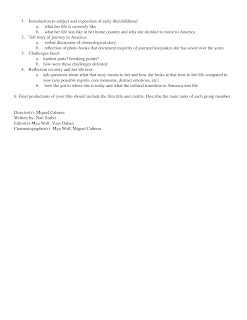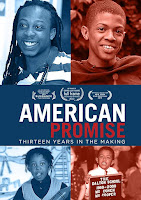This documentary has been one of my favorite projects I have ever worked on. I have had experience in working on film openings, music videos, new stories, and many other forms of media, but I had just now worked on something that was remotely close to a documentary. Being that a documentary is one of the options for my future portfolio project, I really wanted to do the best I could with this in order to test the waters and see if this is what I wanted to do later on. This also to me was an opportunity to try new things and expand my skill-set, which is exactly what I think this documentary did for me.
When creating this documentary, we came across the idea of centering our piece around our group member's grandma, Susana Hernandez. Susana had emigrated from Cuba, her home country, to Budapest, Hungary. After a couple of years, she then immigrated to the United States from Budapest with her daughter, Diana Szabo, where they now established permanent residence. In all my past work that I had created, I had never really delved deep into the representation behind, or even when I did it was very simple and common social group and issues. With this idea, however, I saw the opportunity to tell the story of an immigrant who found her future in the United States but also addresses the challenges that emigration sparks and is never really talked about. Susana is just one of many people in this world who leave her home country and family behind for her safety and assimilate to a brand new area, in her case two. This includes having to learn and get familiar with a whole new language and culture. This piece was a way for us to spread her story to others and advocate the struggles of immigration in a whole new way.
With this message in mind when developing everything in pre-production, we really wanted to make this piece accessible to a large target audience. This would allow for so many people to be able to learn about Susana’s story. Our target audience was roughly 15-60 in age, lower to middle socio-economic class, and open to both genders. The topic of our documentary was not only informative but also sentimental, appealing to multiple age groups. The substance of the story being told and the fact it was structured in chronological order were huge ways we were able to engage our audience.
















